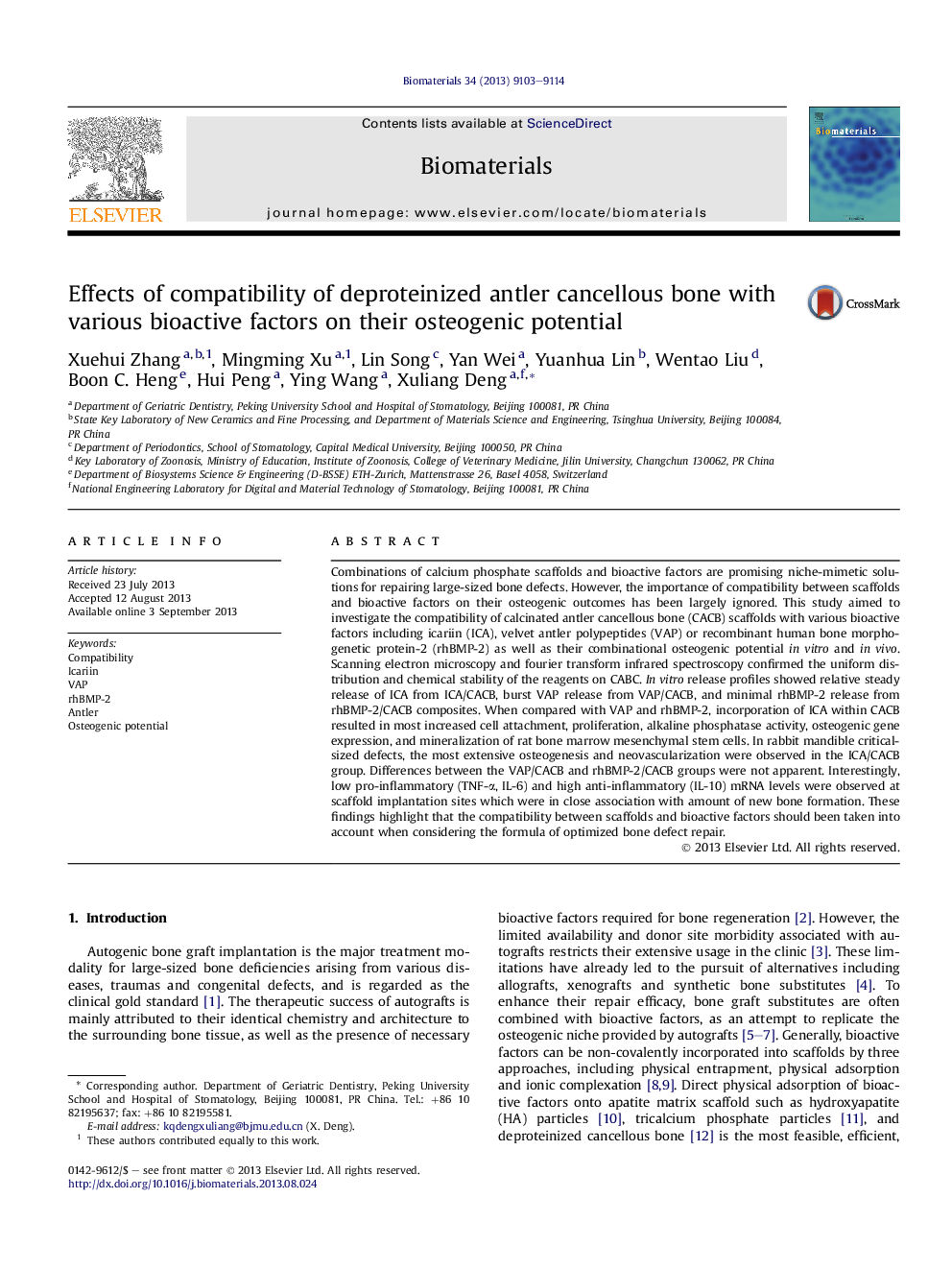| کد مقاله | کد نشریه | سال انتشار | مقاله انگلیسی | نسخه تمام متن |
|---|---|---|---|---|
| 10228322 | 479 | 2013 | 12 صفحه PDF | دانلود رایگان |
عنوان انگلیسی مقاله ISI
Effects of compatibility of deproteinized antler cancellous bone with various bioactive factors on their osteogenic potential
ترجمه فارسی عنوان
اثرات سازگاری استخوان دندانی پروتئینیزه شده سلولی با عوامل مختلف زیستی بر پتانسیل استئوژنیک آنها
دانلود مقاله + سفارش ترجمه
دانلود مقاله ISI انگلیسی
رایگان برای ایرانیان
کلمات کلیدی
موضوعات مرتبط
مهندسی و علوم پایه
مهندسی شیمی
بیو مهندسی (مهندسی زیستی)
چکیده انگلیسی
Combinations of calcium phosphate scaffolds and bioactive factors are promising niche-mimetic solutions for repairing large-sized bone defects. However, the importance of compatibility between scaffolds and bioactive factors on their osteogenic outcomes has been largely ignored. This study aimed to investigate the compatibility of calcinated antler cancellous bone (CACB) scaffolds with various bioactive factors including icariin (ICA), velvet antler polypeptides (VAP) or recombinant human bone morphogenetic protein-2 (rhBMP-2) as well as their combinational osteogenic potential in vitro and in vivo. Scanning electron microscopy and fourier transform infrared spectroscopy confirmed the uniform distribution and chemical stability of the reagents on CABC. In vitro release profiles showed relative steady release of ICA from ICA/CACB, burst VAP release from VAP/CACB, and minimal rhBMP-2 release from rhBMP-2/CACB composites. When compared with VAP and rhBMP-2, incorporation of ICA within CACB resulted in most increased cell attachment, proliferation, alkaline phosphatase activity, osteogenic gene expression, and mineralization of rat bone marrow mesenchymal stem cells. In rabbit mandible critical-sized defects, the most extensive osteogenesis and neovascularization were observed in the ICA/CACB group. Differences between the VAP/CACB and rhBMP-2/CACB groups were not apparent. Interestingly, low pro-inflammatory (TNF-α, IL-6) and high anti-inflammatory (IL-10) mRNA levels were observed at scaffold implantation sites which were in close association with amount of new bone formation. These findings highlight that the compatibility between scaffolds and bioactive factors should been taken into account when considering the formula of optimized bone defect repair.
ناشر
Database: Elsevier - ScienceDirect (ساینس دایرکت)
Journal: Biomaterials - Volume 34, Issue 36, December 2013, Pages 9103-9114
Journal: Biomaterials - Volume 34, Issue 36, December 2013, Pages 9103-9114
نویسندگان
Xuehui Zhang, Mingming Xu, Lin Song, Yan Wei, Yuanhua Lin, Wentao Liu, Boon C. Heng, Hui Peng, Ying Wang, Xuliang Deng,
